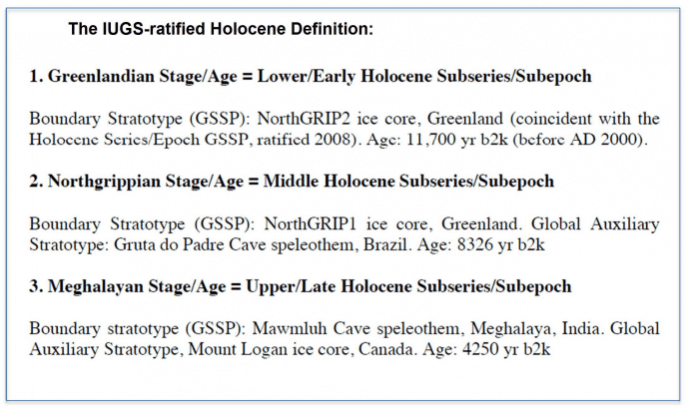Geologists have divided the 4.6 billion years of Earth's existence into slices of time, where each slice tallies with significant events, such as the break-up of continents, dramatic shifts in climate, and even the emergence of particular types of animals and plant life.
The officials have said that the famous diagram, International Chronostratigraphic Chart, that depicts the timeline for Earth's history will be updated with the new discovery made.
We currently live in an age which is known as the Holocene Epoch that reflects every event of the past 11,700 years, that is, when a dramatic warming kicked us out of the last ice age, reported BBC on Wednesday.
The International Commission on Stratigraphy (ICS), an official keeper of geologic time, said that the Holocene itself can be subdivided. It has proposed three stages be introduced to denote the upper, middle and lower phases of epoch.

The last 4,200 years have been classified as being a distinct age in the story of Earth. The onset of this era was marked by a mega-drought the effects of which lasted for centuries that crushed civilisations worldwide- Egypt, Greece, Syria, Palestine, Mesopotamia, the Indus Valley and the Yangtze River Valley.
The beginning of the Meghalayan Age coincides with a global cultural event that a global climatic event produced, said Stanley Finney, Professor at Long Beach State University and Secretary-General of the International Union of Geological Sciences (IUGS). It backed the proposal of ICS.
Professor Mike Walker of the Universityof Wales, UK, who led the international team of Holocene scientists that developed the division proposal, said "The isotopic shift reflects a 20-30 per cent decrease in monsoon rainfall."
Mike was quoted by BBC News as "The two most prominent shifts occur at about 4,300 and about 4,100 years before present, so the mid-point between the two would be 4,200 years before present, and this is the age that we attribute to the Meghalayan golden spike."
The layers of stalagmites on the floors of caves in Meghalaya, India are the finest example of the spike for the Meghalayan. According to ICS, it was likely triggered by shifts in ocean and atmospheric circulation.














